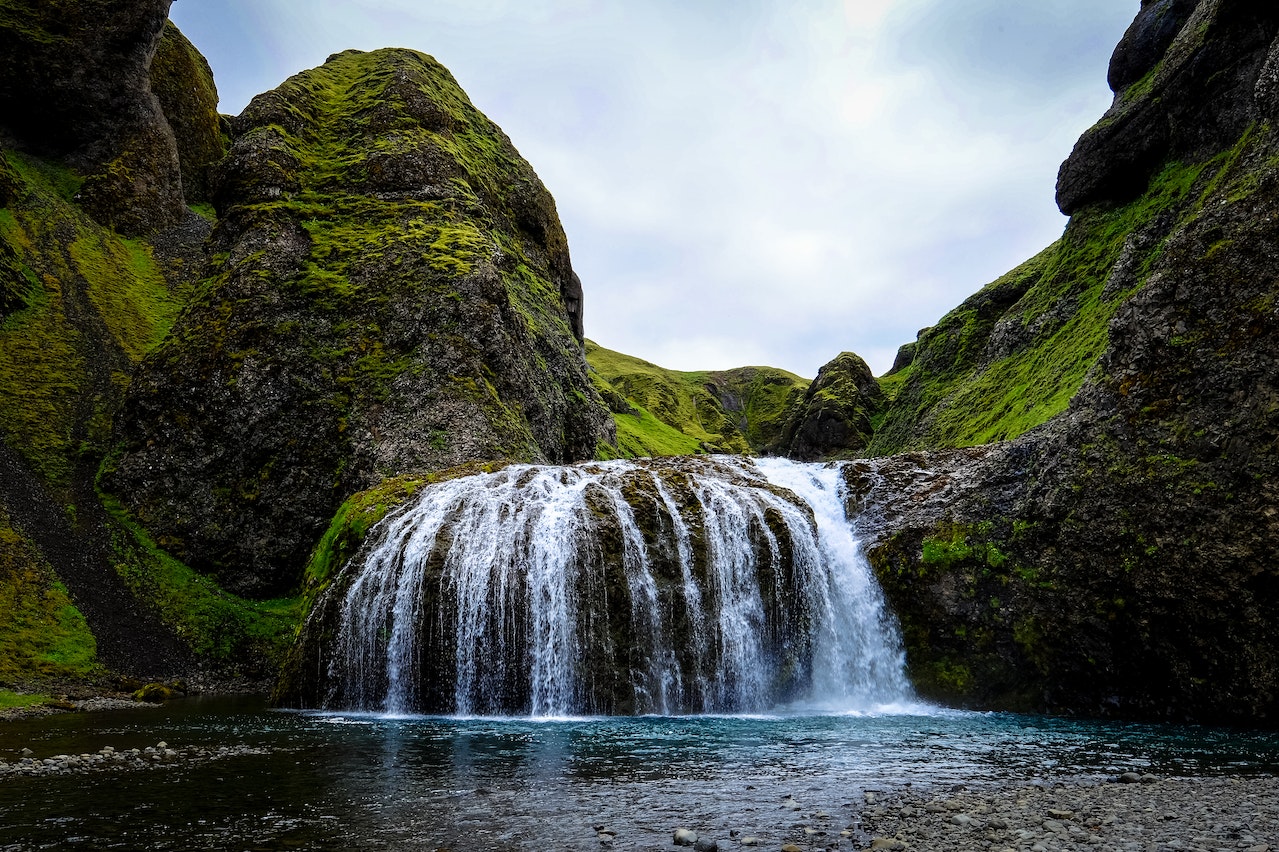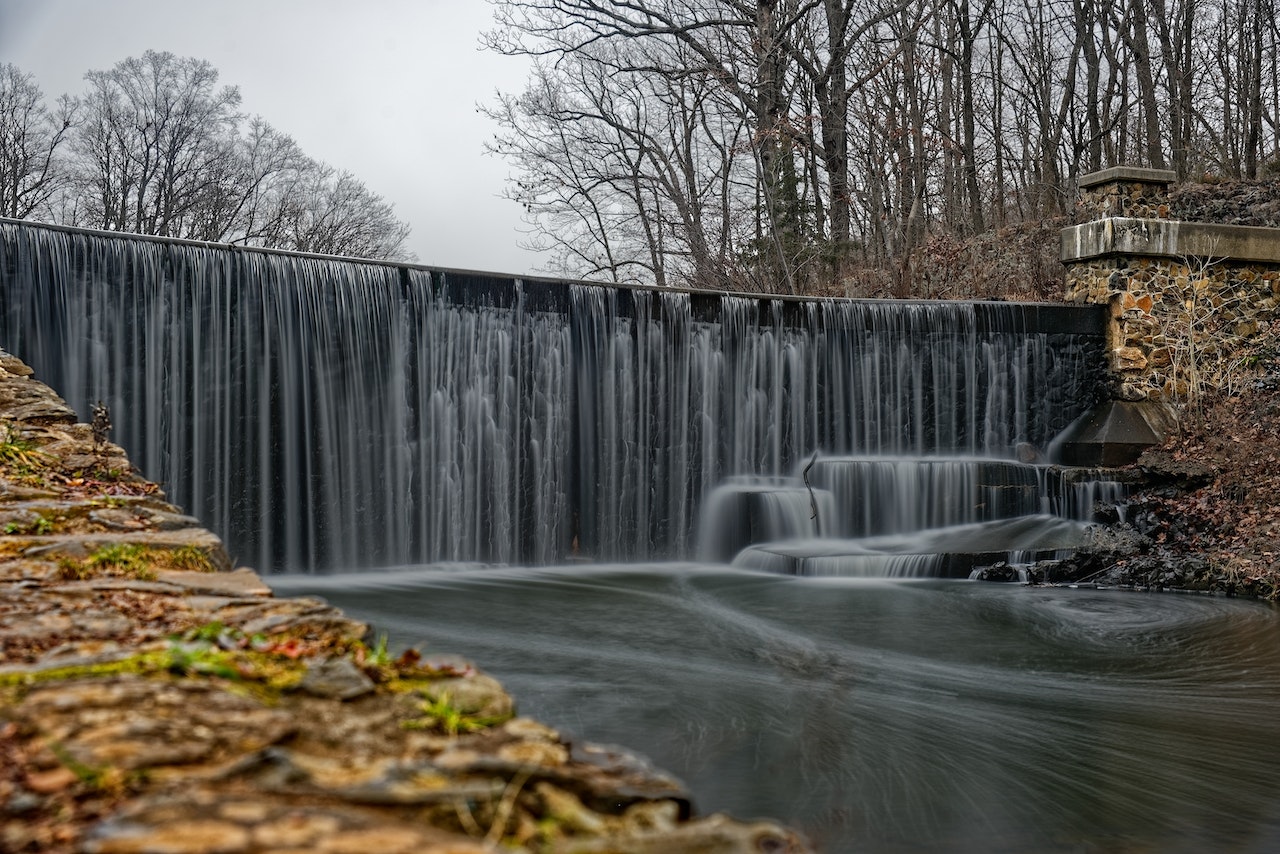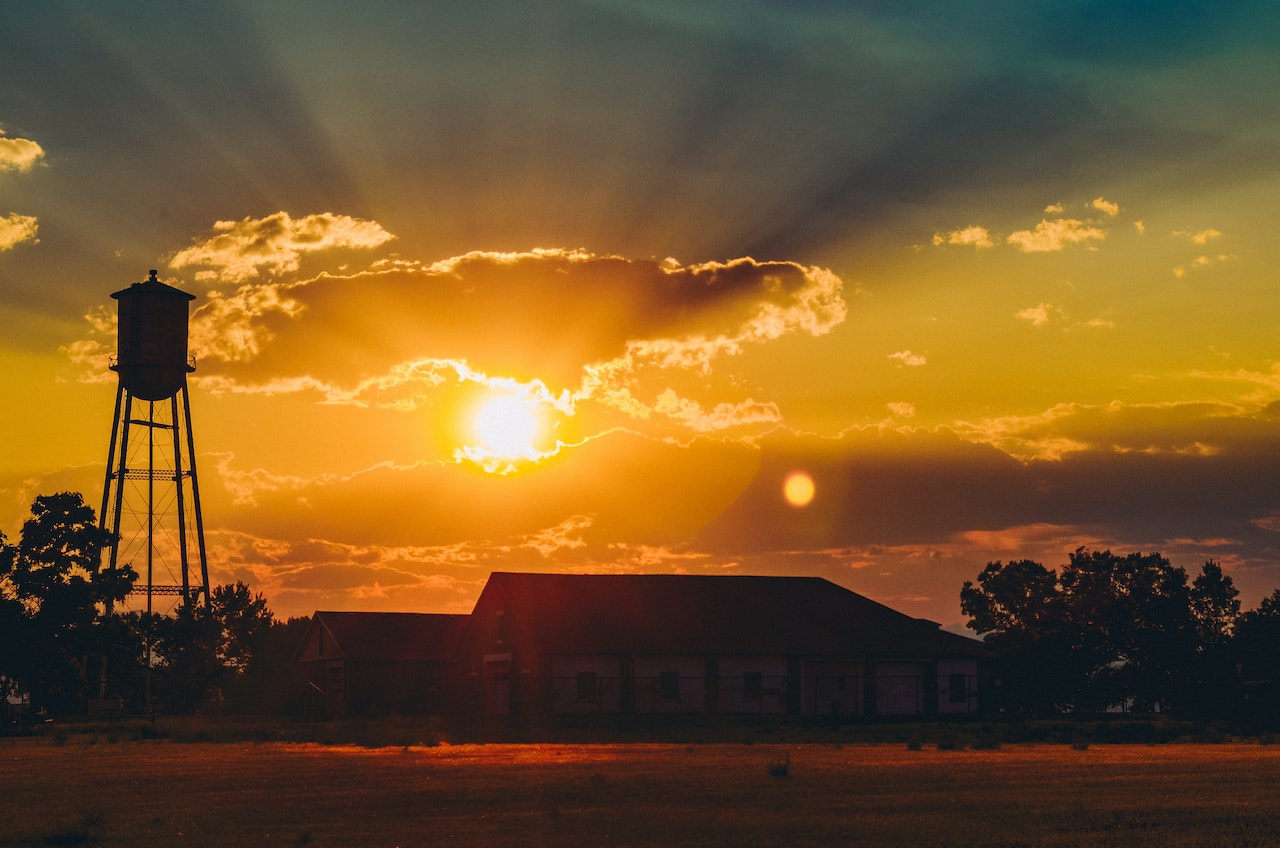Waterfalls, a natural wonder that captivates the imagination, are formed through a complex geological process. The formation of waterfalls involves erosion and weathering, as well as the characteristics of river channels and gradients. Various types of waterfalls exist, each with its own distinct features and formations.
Furthermore, the creation of plunge pools plays a crucial role in shaping these majestic cascades. Additionally, faults and joints contribute to the formation of waterfalls by influencing their structure and flow patterns.
Lastly, human activities have had an impact on waterfall formation over time. This article aims to explore the fascinating phenomenon of waterfall formation while highlighting notable examples from around the world.
Key Takeaways
- Waterfalls are formed through erosion and weathering.
- Knickpoints erode backward over time, forming a steep vertical drop.
- Factors such as rock type and water volume affect the speed of erosion and waterfall formation.
- Waterfalls create unique habitats, alter drainage patterns, and contribute to landscape evolution.
The Geological Process
The geological process involves the erosion of rocks and the gradual formation of a vertical drop in the terrain, resulting in the creation of waterfalls.
Waterfalls are formed through a combination of geological time and various geological processes. Over millions of years, rivers carve their way through landscapes by eroding rocks and sediment. As they flow over different types of rock formations, such as harder layers overlaying softer ones, differential erosion occurs. This creates step-like features in the riverbed known as knickpoints or nick zones.
Over time, these knickpoints continue to erode backward, slowly forming a steep vertical drop. The speed at which this erosion occurs depends on factors such as the type of rock being eroded and the volume and velocity of water flowing over it.
This section will now explore in more detail how erosion and weathering contribute to waterfall formation.
Erosion and Weathering
Erosion and weathering contribute to the development of waterfalls. Waterfalls are formed when erosion factors and weathering processes shape the landscape, creating steep cliffs or resistant rock formations. The following list highlights key aspects of erosion and weathering in relation to waterfall formation:
- Hydraulic action: The force of flowing water dislodges loose rocks and sediments from the riverbed, deepening the channel.
- Abrasion: Sediments carried by the river act as abrasives, wearing down the riverbed over time.
- Freeze-thaw cycles: Repeated freezing and thawing of water within cracks causes rocks to fracture and break apart.
- Chemical weathering: Dissolution or oxidation of certain minerals weakens rocks, making them more susceptible to erosion.
Understanding these erosion factors and weathering processes is crucial for comprehending how waterfalls form.
Next, we will explore how river channels and gradient further shape these geological features.
[Transition sentence: Now that we have examined erosion factors and weathering processes in relation to waterfall formation…]
River Channels and Gradient
River channels and gradient play a significant role in shaping the geological features associated with waterfall formation. The formation of waterfalls occurs due to erosion processes acting on river channels with steep gradients.
Rivers erode the bedrock by both mechanical and chemical weathering, resulting in the creation of deep valleys or canyons. As rivers flow downhill, they encounter areas of different rock hardness, leading to differential erosion. In regions of softer rock, the river erodes more easily, creating a step-like structure known as a waterfall.
The steepness of the gradient determines the height and power of the waterfall. Waterfalls are commonly found in areas where there is a sudden change in river channel gradient, such as at fault lines or where resistant rocks meet less-resistant ones.
Understanding these factors aids in assessing potential hazards associated with waterfalls and their impact on surrounding ecosystems and human communities.
Types of Waterfalls
Size and shape are important factors in understanding the formation and characteristics of waterfalls. The size of a waterfall is determined by various factors, including the volume of water flowing over it and the height from which it falls. Additionally, the shape of a waterfall can vary greatly, ranging from vertical drops to cascades or even multi-tiered formations.
Erosion plays a crucial role in shaping both the waterfalls themselves and the surrounding landscapes. As water flows over rocks, it erodes them through processes such as hydraulic action, abrasion, and corrosion. Over time, this erosion can create distinctive features like plunge pools at the base of waterfalls or steep-walled canyons along their course.
The impact of waterfalls on landscapes extends beyond their immediate surroundings. They can contribute to landscape evolution by altering drainage patterns and creating new landforms through erosion and deposition processes. By studying size, shape, erosion mechanisms, and landscape interactions associated with waterfalls, scientists gain valuable insights into how these natural phenomena shape our planet’s surface.
Size and Shape
Morphological characteristics such as the width and height of waterfalls play a significant role in their formation. The size and shape of a waterfall can impact the overall structure and appearance, as well as its influence on surrounding ecosystems. Here are four key points to consider:
- Height: Waterfalls with greater heights tend to have more powerful water flow, resulting in increased erosion potential and sculpting of the landscape.
- Width: Wider waterfalls allow for a larger volume of water to cascade over the edge, creating a more dramatic visual effect and enhancing their erosive capabilities.
- Plunge Pool: The depth and size of the plunge pool at the base of a waterfall are influenced by its size and shape. This pool plays an essential role in shaping the downstream ecosystem.
- Channel Formation: The geometry of the channel leading up to a waterfall affects its stability, flow dynamics, and sediment transport processes.
Understanding these morphological characteristics is vital for assessing the ecological impact that waterfalls have on surrounding environments.
Erosion and Landscapes?
In the previous subtopic, we discussed the size and shape of waterfalls. Now, let’s delve into the process of erosion and deposition that leads to the formation of these majestic natural features.
Waterfalls are formed through a combination of geological processes involving erosion and deposition. Erosion occurs when flowing water wears away rocks and sediment, gradually creating a vertical drop or cliff. This erosive action is intensified in areas where softer rock layers overlay harder ones, leading to differential erosion.
As water cascades over these cliffs, it erodes softer rock more rapidly than harder rock, resulting in the formation of a step-like structure called a waterfall. The impact on ecosystems is profound as waterfalls create unique habitats with distinct microclimates and provide shelter and resources for various plant and animal species. Furthermore, their constant flow helps oxygenate the surrounding environment while facilitating nutrient cycling in aquatic ecosystems downstream.
Formation of Plunge Pools
The formation of plunge pools is a crucial aspect in understanding the process of waterfall development. Plunge pools are deep, cylindrical depressions that form at the base of waterfalls due to erosion. Here are four key points about plunge pool formation and erosion patterns:
- Hydraulic action: The force of falling water causes hydraulic action, where high-pressure water dislodges rocks and sediments from the riverbed.
- Abrasion: As these dislodged materials are carried downstream, they act as tools, eroding the bedrock through abrasion.
- Plunge pool excavation: Over time, this abrasive action deepens the plunge pool by wearing away softer rock layers at its base.
- Pool maintenance: Once formed, plunge pools undergo continuous maintenance as turbulent flow circulates sediment within them, further deepening and widening their dimensions.
Understanding the formation and erosion patterns of plunge pools provides valuable insights into how waterfalls shape landscapes and contribute to landform evolution.
Role of Faults and Joints
The role of faults and joints in the formation of waterfalls is a significant area of study in geology. Fault-induced water flow refers to the movement of groundwater along fault lines, which can contribute to the erosion and formation of waterfalls.
Additionally, joint-controlled waterfall formation occurs when water follows pre-existing fractures in the rock, causing them to widen and deepen over time.
Understanding the geological impact on waterfalls involves analyzing how factors such as rock type, structure, and tectonic activity influence their formation and evolution.
Fault-Induced Water Flow
Fault-induced water flow can contribute to the formation of waterfalls. Waterfalls are formed when flowing water encounters a sudden change in elevation, leading to the rapid descent of the water. Faults, which are fractures in the Earth’s crust, can influence waterfall dynamics by creating pathways for groundwater to flow.
Here is a list highlighting the key aspects of fault-induced water flow and its role in waterfall formation:
- Faults act as conduits: When faults intersect permeable rock layers or fractures, they provide preferential pathways for underground water to flow towards the surface.
- Increased discharge: Fault-induced water flow can increase the volume and velocity of groundwater discharging at specific points along fault lines.
- Erosion potential: The concentrated discharge from fault-induced flow can enhance erosion along faults, creating localized areas of weakness where a waterfall may form.
- Geological controls: The presence and orientation of faults influence the location and alignment of waterfalls within a landscape.
Understanding fault-induced water flow is crucial for assessing landscape evolution, managing hydrological resources, and appreciating the geologic processes that shape our environment.
Joint-Controlled Waterfall Formation
Joint-controlled waterfall formation is influenced by the presence and orientation of joints in the rock layers. Joints are fractures or cracks in the rocks that allow water to infiltrate and create pathways for erosion. The presence of joints determines the shape, size, and location of waterfalls. In addition, the orientation of joints affects how water flows over them, creating unique patterns and cascades.
The impact of climate change on joint-controlled waterfall formation is a growing concern. Changes in precipitation patterns can alter water availability, affecting the volume and intensity of waterfalls. Rising temperatures can also lead to increased melting of glaciers and ice caps, resulting in changes to waterfall flow rates. Additionally, changes in vegetation cover due to climate change can affect sediment transport and deposition around waterfalls.
Table: Factors influencing joint-controlled waterfall formation
| Factor | Influence |
|---|---|
| Presence of joints | Determines location and shape |
| Orientation of joints | Affects flow patterns |
| Climate change | Alters water availability and flow rates |
| Precipitation patterns | Influences volume and intensity |
| Vegetation cover | Affects sediment transport |
Understanding these factors is important for managing and preserving these natural wonders amidst changing environmental conditions.
Geological Impact on Waterfalls
Geological processes play a significant role in shaping the formation and characteristics of waterfalls. Waterfall formation processes are influenced by various geological formations and factors. The following list highlights key geological impacts on waterfall formation:
- Erosion: As water flows over different types of rock, erosion occurs at varying rates. Softer rocks such as sandstone erode more quickly, leading to the creation of plunge pools at the base of waterfalls.
- Faults and Joints: Geological faults and joints provide natural pathways for water to flow through, enhancing the formation of waterfalls along these structures.
- Tectonic Activity: Uplift and tectonic forces can create steep cliffs or valleys where waterfalls form. These movements also contribute to changes in topography that influence waterfall formation.
- Bedrock Resistance: Differences in bedrock resistance can result in uneven erosion patterns, causing variations in waterfall heights and shapes depending on the type of rock encountered.
Understanding these geological influences is crucial for serving others by providing accurate information about waterfall formations and helping preserve these natural wonders for future generations to enjoy.
Human Impact on Waterfall Formation
Human activities can significantly alter the formation of waterfalls. These activities, often driven by human needs and desires, can have both positive and negative impacts on waterfall ecosystems. On one hand, human interventions such as dam construction can create artificial waterfalls for aesthetic purposes or to generate hydroelectric power. On the other hand, deforestation, mining, and urbanization can negatively affect natural waterfall formation processes. Environmental conservation efforts are crucial in mitigating these negative impacts and preserving the integrity of waterfalls. Conservation measures include reforestation to prevent soil erosion, regulation of water flow to maintain a stable ecosystem, and public education programs promoting sustainable practices. By understanding the impact of human activities on waterfall formation and undertaking appropriate conservation actions, we can ensure the preservation of these natural wonders for future generations.
| Positive Impacts | Negative Impacts |
|---|---|
| Dam construction for aesthetics | Deforestation |
| Hydroelectric power generation | Mining |
| Urbanization |
Famous Waterfalls Around the World
Renowned for their grandeur and natural beauty, waterfalls such as Niagara Falls in North America, Angel Falls in Venezuela, and Victoria Falls in Africa are captivating attractions that draw millions of visitors each year. These famous waterfall formations have not only aesthetic value but also hold cultural significance for the communities living nearby.
- Niagara Falls: Located on the border between the United States and Canada, it symbolizes power and has been a source of inspiration for artists throughout history.
- Angel Falls: Situated in the Canaima National Park, it is the highest uninterrupted waterfall globally, named after Jimmy Angel who discovered it while searching for gold.
- Victoria Falls: Found on the Zambezi River between Zambia and Zimbabwe, it is known locally as ‘Mosi-oa-Tunya,’ meaning ‘The Smoke that Thunders.’ The indigenous people consider it sacred.
These famous waterfalls serve as prominent landmarks that attract tourists from around the world while embodying cultural significance within their respective regions.
Frequently Asked Questions
How Do Waterfalls Contribute to the Formation of Canyons?
Waterfalls contribute to the formation of canyons through processes such as waterfall erosion and river channeling. Waterfall erosion occurs when the force of falling water erodes rock and sediment, deepening the canyon. River channeling happens as water flows downstream, further shaping the canyon’s contours.
Can Waterfalls Form in Areas With Low Precipitation?
Waterfall formation in arid regions or desert areas is influenced by various factors, including geology, climate, and hydrology. While low precipitation can limit the availability of water for waterfall formation, other geological processes may still contribute to their development.
What Are Some Examples of Waterfalls Formed by Glaciers?
Examples of glacial waterfalls include the famous Yosemite Falls in California and the Skógafoss waterfall in Iceland. Formation of glacial waterfalls involves the erosion of bedrock by meltwater from glaciers, resulting in steep drops and cascades.
Are There Any Waterfalls That Have Changed Significantly Over Time?
Waterfall erosion can cause significant changes to waterfalls over time. The effects of climate change, such as increased rainfall or melting glaciers, can accelerate the erosion process and lead to alterations in the size, shape, and location of waterfalls.
How Do Man-Made Structures, Such as Dams, Affect the Formation of Waterfalls?
The impact of dams on the formation of waterfalls is evident in their alteration of natural erosion patterns. The presence of man-made structures disrupts the flow of water, leading to changes in the formation and maintenance of waterfalls.
Conclusion
In conclusion, waterfalls are formed through a complex geological process involving erosion and weathering. River channels and gradients play a crucial role in shaping the formation of waterfalls. Different types of waterfalls can be observed based on their characteristics and how they are formed.
Plunge pools also contribute to the formation of waterfalls by providing a basin for the falling water to accumulate. Faults and joints in rock formations have an impact on the development of waterfalls as well.
It is important to acknowledge that human activities can affect waterfall formation, highlighting the need for conservation efforts. As we explore famous waterfalls around the world, it becomes evident that these natural wonders captivate our senses with their majestic beauty and roaring power, leaving us in awe of nature’s grandeur.



